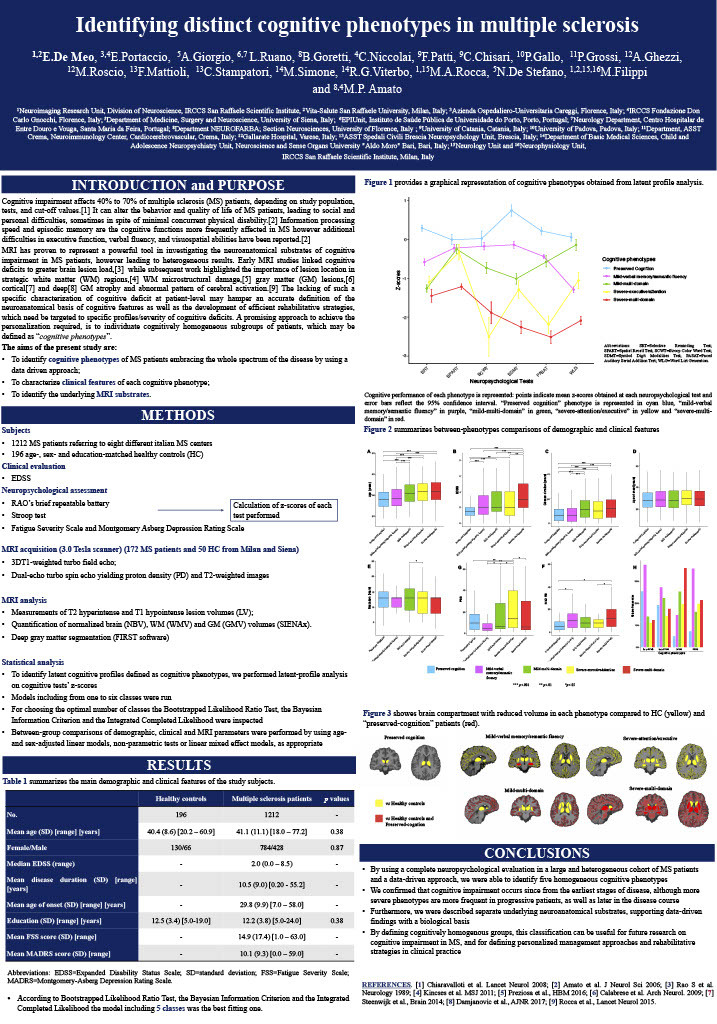Identifying distinct cognitive phenotypes in multiple sclerosis
Abstract
Background:
Cognitive impairment is a common and disabling feature of multiple sclerosis (MS), but a precise characterization of cognitive phenotypes in MS patients is still lacking.
Objectives:
We sought to define homogeneous cognitive phenotypes in a large cohort of MS patients by using a data-driven approach, and to assess their distinctive clinical and MRI features.
Our aim was to go beyond traditional preserved/impaired classification dichotomy, setting the stage for future research and tailored management approaches.
Methods:
1212 clinically stable MS patients and 196 HC not using psychoactive drugs, without any history of other neurological/medical disorders, learning disability, severe head trauma, alcohol/drug abuse were enrolled in this multicenter cross-sectional study.
All subjects underwent neurological examination and cognitive evaluation with Rao’s Brief Repeatable Battery and Stroop Color Word Test. MRI protocol included brain 3DT1-weighted and dual-echo sequences for atrophy and lesion assessment. Latent-profile analysis was used on
cognitive test z-scores for identifying cognitive phenotypes. Linear regression and mixed effects models were used to define clinical and MRI features of each phenotype.
Results:
Mean (standard deviation) age was 41.1 (11.1) years for MS patients (784 [65%] females), and 40.4 (8.6) for HC (130 [66%] females). Five cognitive phenotypes were identified: “preservedcognition” (19%), “mild verbal memory/semantic fluency” (30%), “mild-multi-domain” (19%), “severe-attention/executive” (14%), and “severe-multi-domain” (18%) involvement. “Preserved cognition” and “mild-verbal memory/semantic fluency” patients were younger and had shorter disease duration compared to the other phenotypes. Physical disability was lowest in “preserved
cognition” and highest in “severe-multi-domain” patients. Severe cognitive phenotypes prevailed in progressive patients. At MRI evaluation, compared to “preserved-cognition”, “mild verbal memory/semantic fluency” patients exhibited reduced hippocampal volume, “mild-multi-domain”
reduced cortical gray matter volume, “severe-attention/executive” higher T2-hyperintense lesion volume and severe-multi-domain” extensive brain damage.
Conclusions:
By defining homogenous and clinically-meaningful phenotypes, this study can pave the way to future research on neuroanatomical substrates of MS-related cognitive impairment and help define tailored management strategies.

